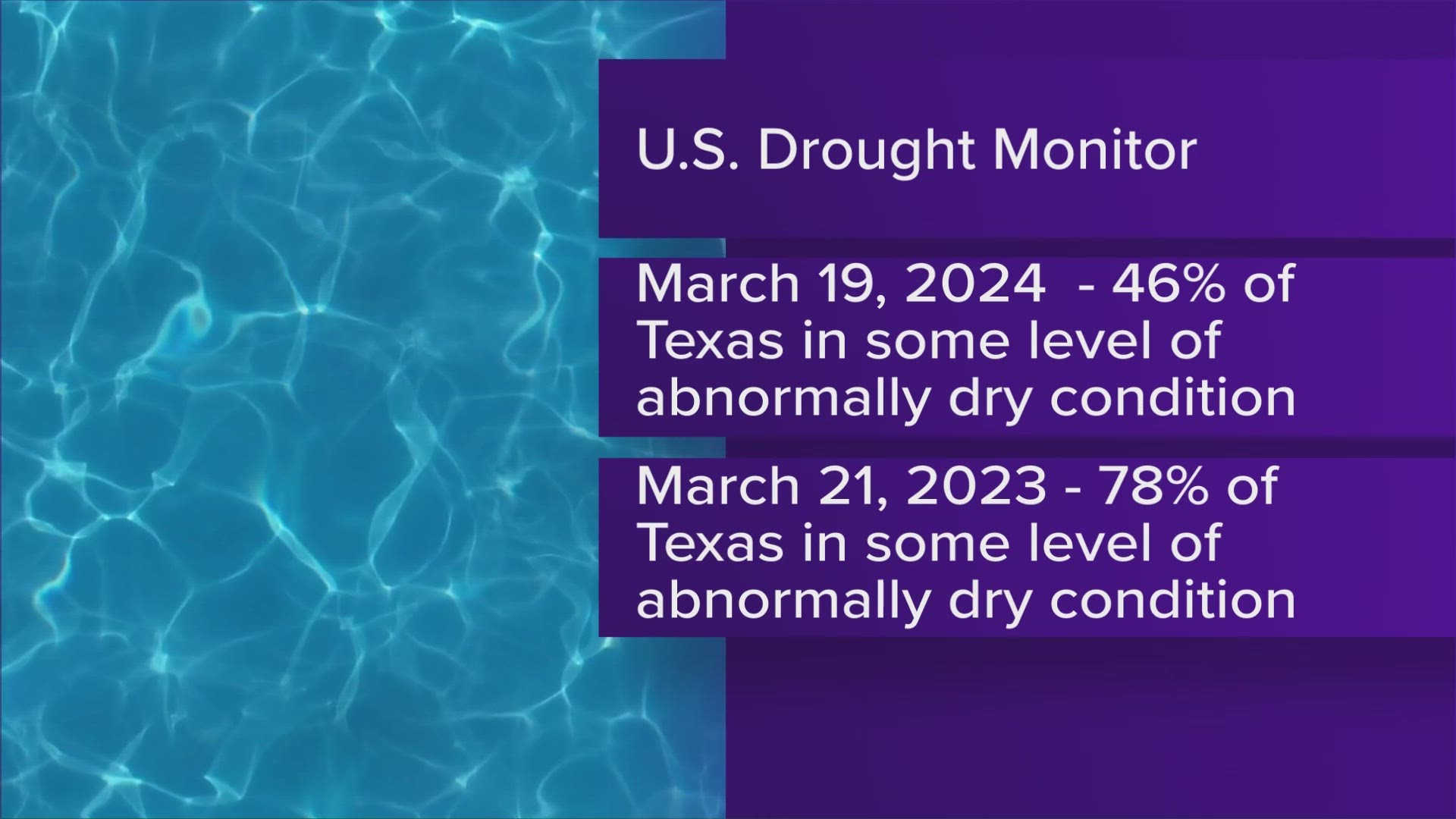AUSTIN, Texas —
As more people continue moving to the Austin area, there’s concern about having enough water in the future.
The KVUE Defenders have tracked how growth, ongoing drought conditions, and aging infrastructure affect water supplies. On Tuesday, the Lower Colorado River Authority took a big step to accommodate that growth.
LCRA’s Board of Directors voted unanimously to pass a new drought contingency plan for the more than 40 Central Texas cities, water districts and industries that buy water from the agency.
The new Drought Contingency Plan includes lower thresholds to trigger each stage.
To trigger Stage 1, the combined storage level for Lakes Travis and Buchanan must hit 1.1 million acre-feet. Stage 2's new trigger is 900,000 acre-feet. Stage 3, which is newly created, activates when the combined storage level falls to 750,000 acre-feet. Lastly, Stage 4 goes into effect when the storage level for both lakes hits 600,000 acre-feet or below.
An acre-foot is enough water to cover an acre, one foot deep. Both lakes are the two water supply reservoirs for the Highland Lakes.
As of March 19, the U.S. Drought Monitor shows 46% of Texas in some level of abnormally dry drought condition. At this time last year, 78% of Texas was in some level of abnormally dry drought condition. However, the LCRA warns that looking at the drought monitor alone is not an accurate picture of the state of our water and that lake levels must also be considered.
In March of 2023, the combined storage level for Lakes Travis and Buchanan sat at 1,036,507 acre-feet. This year, that level is 845,086 acre-feet, meaning there's a lower combined storage level despite having fewer areas in abnormally dry drought conditions.
If the lakes become full, LCRA General Manager Phil Wilson said there is still not enough water to accommodate future growth.
“We are in a new water environment," Wilson said. "The lakes have not gotten any bigger in the past 50 years, but our population certainly has. You can't conserve your way out and you can't build your way out. You have to have both."
LCRA customers must incorporate these changes into their drought contingency plans in April. Penalties for ignoring watering restrictions include a verbal warning, a written notice, and ultimately a $10,000 a day fine. The penalties came after the LCRA Board approved outdoor watering limits to no more than once a week in many Central Texas communities.

